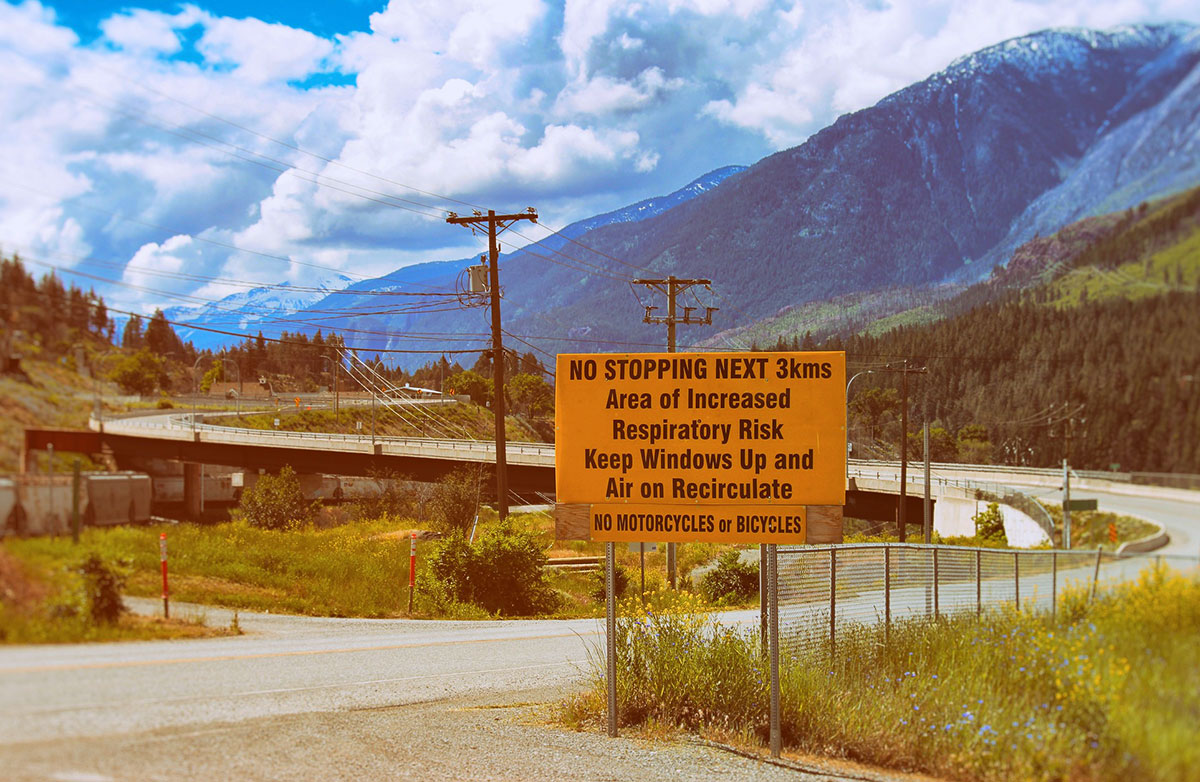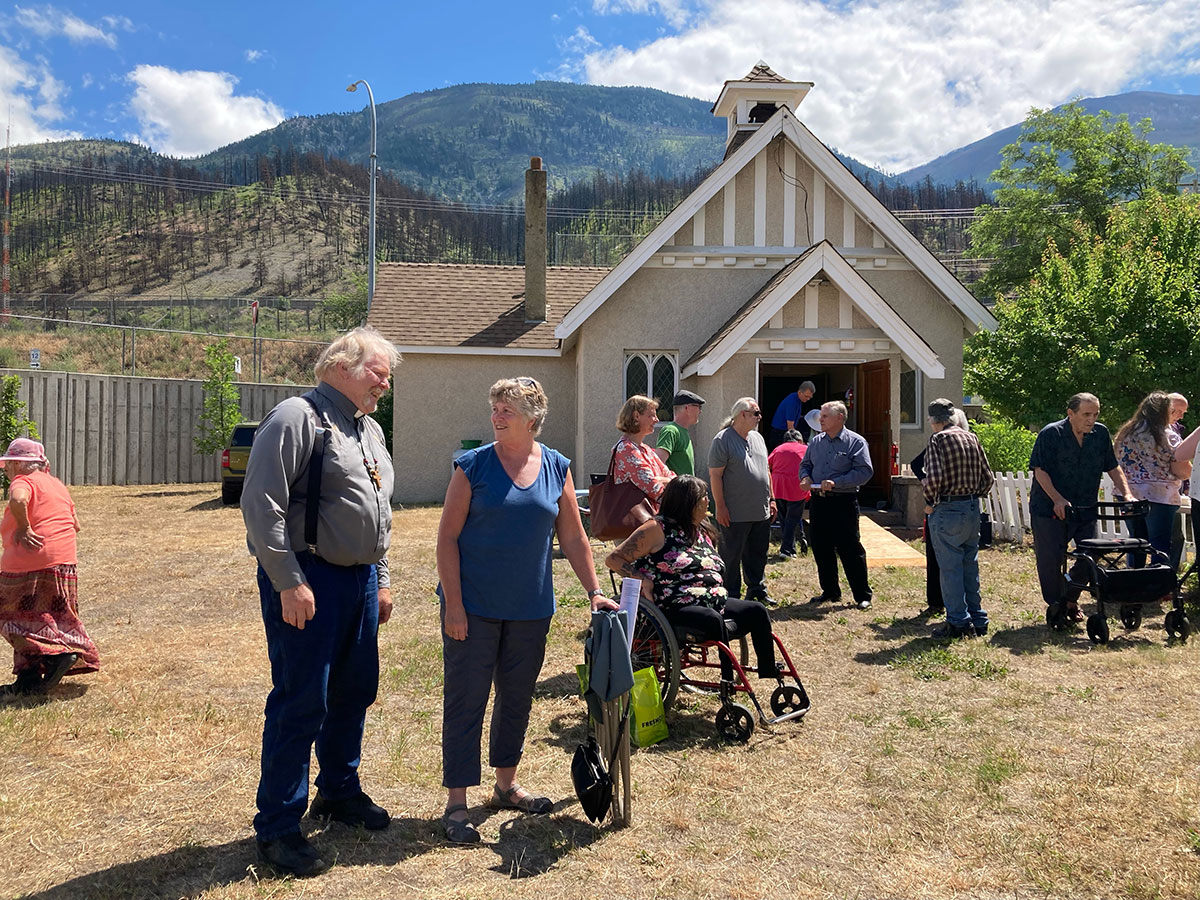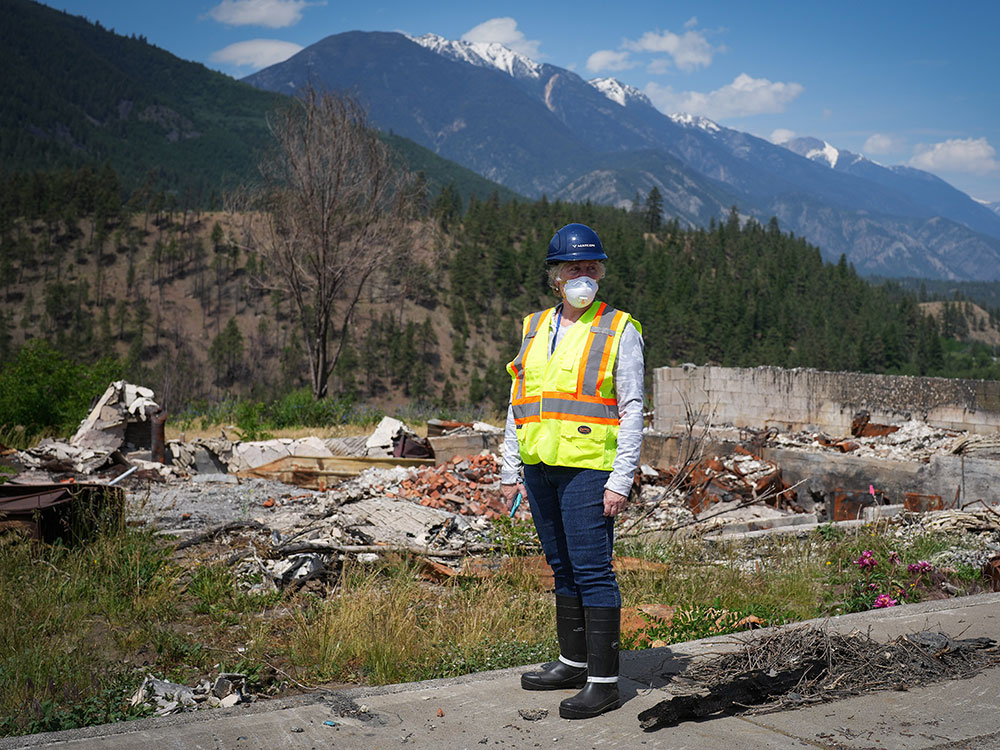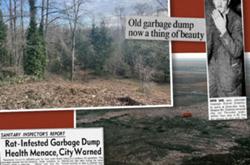Olivia Hughes remembers waking up on the morning of June 30, 2021.
She and her partner, Chad, had moved into their new home in Lytton the day before, in the midst of a deadly heat dome that shattered Canadian records when temperatures in the community hit 49.6 C.
Hughes, who grew up in the area and works for the B.C. Wildfire Service, was well aware that that local terrain — steep canyon walls, gusty winds and extreme heat — made it prone to wildfires. The morning held an ominous stillness.
“I don’t feel good about today,” she told her partner.
That afternoon, as Hughes was travelling through the village working smaller fires to the north and south, she spotted the wildfire that would tear through Lytton in under a half hour. Her team responded, urging residents to leave, but it was too late to bring the raging fire under control.
Helpless, she watched the community she loved burn.
Two years later, information about what caused the devastating Lytton fire, which destroyed 90 per cent of the community and killed two residents, continues to be mired in secrecy.
B.C. Wildfire Service confirmed to The Tyee that its Lytton fire origin and cause report has now been forwarded to the RCMP. But the report remains under wraps as the RCMP’s criminal investigation continues.
Hughes says there’s a sense of hurt and anger in Lytton as the investigation drags on. Knowing who’s responsible would be “closure on the worst nightmare of my life,” she says.
“I wish that this chapter could have been closed earlier and now it’s become so political that it is frustrating,” she says.

Some residents aren’t waiting for official answers.
It’s broadly believed within the community that the trains that lumber through Lytton are responsible for the fire. In particular, a locomotive that passed through town at 4:30 p.m. on June 30, 2021, 18 minutes before the fire was reported, has been cause for suspicion.
As the two-year window closes on the statute of limitations to seek legal action against those responsible, Canada’s two major railway companies face a flurry of lawsuits.
Earlier this year, Lytton residents asked the B.C. Supreme Court to certify a class-action lawsuit against Canadian National and Canadian Pacific. They say the railway companies, along with the federal government, should have done more to prevent wildfires on the day Lytton burned.
A decision by the B.C. Supreme Court on whether the lawsuit will proceed is still pending.
In the days leading up to the two-year anniversary, a handful of additional lawsuits were filed against CN and CP, most of them by insurance companies seeking to recoup costs.
Plaintiffs named in the lawsuits include the Village of Lytton and Thompson-Nicola Regional District, the local health authorities and school board, and a list of more than a hundred Lytton residents and businesses impacted by the fire. All three lawsuits were filed by companies that insured the plaintiffs.
The lawsuits allege that the railway companies could have done more to prevent the fire, including travelling at slower speeds, removing brush from alongside the tracks, dousing the right-of-way with water and posting an employee to watch for smoke.
They also name various government agencies that they say failed to regulate the industry in a way that would have mitigated fire risk.
None of the allegations have been tested in court.
Pivoting from recovery to rebuilding
Jennifer Thoss says she’s not holding her breath when it comes to an official source of the fire.
“I think it could take a really, really long time, we’re talking a decade, and CN and CP’s pockets are deep,” she says.
In the meantime, efforts to rebuild the community are moving ahead.
On June 19, the village lifted the state of local emergency and evacuation order that had been in effect since the day of the fire, marking a significant milestone in the journey home.
Thoss, a schoolteacher, is taking the next year off to focus on her own properties. She is also a councillor on Lytton’s recently elected all-women council, a team that has been a force in moving the community toward rebuilding. Combined with new staff, including two recently hired recovery managers, the community appears poised to turn a corner.
“It looks like a big dirt field,” Thoss says. “It is very much a blank slate right now.”
But rebuilding could be on the horizon, Mayor Denise O’Connor says.
After two years of false starts, O’Connor sounds cautiously optimistic that residents might finally have the gratification of seeing their community begin to re-emerge — with building getting underway as soon as late summer.
“I would be pleasantly surprised to see it earlier,” she adds.
In the wake of the fire, fears that the land may be toxic led to the removal of the top two feet of Lytton’s surface, a massive undertaking that involved extensive archaeology work in an area traditionally used by the Nlaka'pamux Nation.

With the excavation recently completed, backfilling is set to begin. It starts today, symbolically, with a ceremonial load of fill to mark the transition from recovery to rebuild. Once the properties have been backfilled, construction can begin. The village has begun to accept its first building permit applications.
Another development is the return of power to the community, with Lytton’s few remaining buildings reconnected to the grid in recent months. The sewer system, left dormant the past two years, is undergoing tests before becoming operational.
The task of bringing Lytton to this stage has been both rewarding and overwhelming, both Thoss and O’Connor say.
“I really credit the staff we’ve brought on board, our recovery managers in particular,” O’Connor says about the recent progress. “Bringing on the staff that we’ve brought on has been really, really helpful.”
Lytton left in the lurch
It was no accident that Ken Pite’s camper was sitting on his pickup truck the day of the Lytton fire.
He’d been outside earlier in the day and noticed how tinder-dry the grass was, as water restrictions were in effect and temperatures soared. The wind had picked up, too, adding the final ingredient for extreme fire danger. He knew there was a high risk of wildfires.
When the smell of smoke began permeating the walls of his home shortly after 4:30 p.m., he knew it was time to leave. He threw a few things in the truck and drove away, knowing he may never see his home again.
Two years later, Pite is still living in his camper.
“I consider it disgraceful that two years later we have no RCMP report on the cause of the fire,” says Pite, who is currently parked at a friend’s orchard and vineyard across the valley, where he keeps busy helping with chores.

Once Pite’s property has been backfilled, he and his camper will move home. Others in the community continue to live in motels, trailer parks and friends’ basements, he says.
With no one to take responsibility, there is no clear way forward to recoup their losses. Those without insurance are dependent on charity to rebuild, Pite says. But while there are groups willing to provide labour, the cost of building materials — which has soared in recent years — can be prohibitive.
While Pite was insured, the insurance has limits. Increased construction costs, stricter building code requirements and skyrocketing insurance premiums could all pose financial barriers.
“I’m hoping that I can get something built for the insurance that I have, but I don’t know for sure,” he says. “I’m in this limbo and have been for years.”
As extreme heat and wildfires become more common, Pite hopes that there’s a lesson in what Lytton has experienced.
“The villagers in Lytton have been left very much in the lurch,” he says. “This isn’t a suitable way of running a society. We need to have people on the ground immediately in dealing with the needs of people who have been impacted by disasters.
“I want people to ask themselves, how do you want to be treated when this happens to you? Because I think this is a case study of how not to treat a community.”
Railway companies distance themselves from allegations
The Tyee reached out to both CN and CP for a response to the continued speculation that a train caused the Lytton wildfire. Both declined to comment, with CN citing the current legal cases.
CP provided a link to the Transportation Safety Board’s 2021 investigation into the Lytton fire.
While the TSB initially said it had reasonable grounds to believe railway activity caused the fire, based on information from the B.C. Wildfire Service and RCMP, in October 2021 its investigation determined that there was “no evidence” of a link between the fire and the railway.
In forming its legal case against the railway companies, Vancouver law firm Slater Vecchio requested internal communications about the TSB investigation through federal freedom of information laws. The request, which took more than a year to process, turned up more than a thousand pages of documents.
A handful of those pages are reproduced in an affidavit submitted to the B.C. Supreme Court earlier this year as part of the proposed class-action. They show that investigators struggled to get enough carbon debris from the suspected train’s exhaust stack to compare with samples found next to the tracks, where the fire is believed to have started.
Provincial wildfire investigators had “expressed interest in samples of a black, carbonaceous coal-like substance” found near the tracks, noting it was a possible source of ignition, according to the TSB’s final report.
The Tyee requested the full response provided to law firm Slater Vecchio, but was told by an access to information analyst with the TSB that it won’t be made public, despite federal freedom of information laws that require public bodies to post them within 30 days.
The TSB pointed to exceptions for posting responses but declined to provide a specific reason for withholding the files.
A year ago, The Tyee also requested, through provincial freedom of information laws, a draft of B.C. Wildfire Service’s report on the cause of the Lytton fire. The Ministry of Forests declined, citing a section of the act that allows it to withhold information that could be harmful to law enforcement.
After a complaint was filed with B.C.’s Office of the Information and Privacy Commissioner, the ministry changed course, saying the RCMP — and not the province — has custody of the report. The complaint is awaiting an inquiry, a process that could take years.
The RCMP released a statement saying its investigation remains “active and on-going... to assess for possible criminality and we have no timeline with respect to when it may be completed.”
Clinging to a sense of community
In the meantime, delays in rebuilding have tugged at the strong social fabric in Lytton.
Pite recalls that, as fire bore down on the town, residents risked their own lives to go door to door, walking into their neighbours’ homes if necessary to ensure they were alerted to the danger. It’s a testament to the strength of the community where he’s lived for nearly three decades, he says.
That cohesiveness is credited for many residents’ determination in waiting out delays to move back.

But as time marches on, the community has changed, including the loss of core members. Some of the more elderly residents have died over the past two years, never having had the chance to return home. Others have moved closer to family or into long-term care. In some cases, frustration has given way to defeat, and some residents have decided to move elsewhere.
Hughes’ home, one of the few that didn’t burn in the fire, has been both a refuge and a reminder of that horrible day. In many ways, it has been a place of healing after the trauma of fighting the fire that consumed her community.
But walking her dogs through the burned remains of her community has also been a constant reminder.
“It felt like the apocalypse,” she says. “It’s hard to drive through the town every day that you watched burn. So, while our home feels really good, everything outside is hard.”
The couple is leaving. As they begin to build their future together, they want it to include community, like the one that was scattered when Lytton burned. They recently took possession of a new home in Lillooet.
“It’s too hard to plan a life and a family right now,” Hughes says. “It has been the hardest thing I’ve ever done.” ![]()
Read more: Rights + Justice, Environment, Urban Planning

















Tyee Commenting Guidelines
Comments that violate guidelines risk being deleted, and violations may result in a temporary or permanent user ban. Maintain the spirit of good conversation to stay in the discussion and be patient with moderators. Comments are reviewed regularly but not in real time.
Do:
Do not: